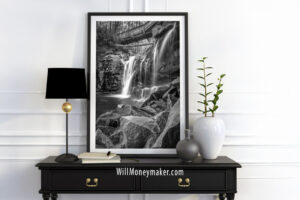We photographers spend a big portion of our time analyzing and re-analyzing what it takes to create a photograph that will be enjoyed by a wide audience. The fact is, anyone can create a photograph, but not everyone can create an image that captures the minds and hearts of the people who see it. Sometimes, it helps to look at the methods we use to create meaningful images from all different perspectives. And that leads me to today’s topic, which is transparency in photography.
Transparency is something of a buzzword these days — everyone wants companies, politicians and so forth to be open and upfront about things. That’s kind of the point I’m trying to make with the idea of transparency in images. Obviously, I don’t mean that we should make actual transparencies! To make a transparent image, that means we need to make an image that is clear to those who see it. They don’t have to dig to find meaning or emotion in it.
So how do we go about creating transparent images? There are lots of ways to go about it, and lots of things that we can do. Here are some of the basics that will help you get the things that you intend across to a broader audience.
Trim Away the Excess
The first step to giving an image’s message transparency is to make that image as clean as possible. Think of it as a window. Dirt, smudges, fingerprints, and splotches — all of these things distract from the vista beyond. They take away from what should be an otherwise picturesque image.
The same goes for photographs. Always seek to remove things that don’t belong. Are there elements within the frame that don’t support the message? If so, then find a way to take the photograph without those elements or use Photoshop to remove them digitally. Cropping is another tool you can use to chop out those distracting elements that tend to creep in around the edges of the frame.
All of this work is in an effort to create the cleanest image possible so that you can best display your subject material. And that brings me to the subjects themselves. Are they posed well or arranged in such a way that it helps you to get your message across? If not, then consider moving people or other subjects around until their positions in some way support what you are trying to communicate. This step of the process is all about the careful planning and arrangement of every detail within the frame to make sure that you are being as transparent as you can be.
Once You’ve Trimmed, Think About What You Can Add
When you’ve pruned out all that is non-essential, it’s time to think about what can be added to the image. This is something that requires careful thought because the possibilities are endless. In general, you probably won’t want to add too much, but sometimes, one or two additional adjustments can help give a photograph the emphasis it needs to make the meaning clear.
And this doesn’t necessarily mean that you need to add props or additional elements within the frame of an image — although if you think of something that enhances the message, by all means, go for it! But when I refer to other things that you can add, for the most part, I’m speaking of things that can be layered into an image, either during the production or in post-processing.
Color, for example, can have a big impact on a photograph’s mood and meaning. It may be that you’ll want to push an image more toward one color or another, either by altering the color cast in post-processing or by including lots of objects of a particular color within the frame. Reds, for instance, can lend a sense of urgency or danger, while greens and blues are regarded as calming colors. Use shades wisely, and you’ll find that photographs become more transparent because of them.
Lighting is another one of those things that can affect the mood or tone of an image. Think about color temperature when you compose images. Cool toned lighting has a distinct chilling effect, which can help underscore more subdued moods, while golden, warm-toned lighting tends to give photographs a comforting, almost reminiscent aspect.
Color and lighting are just two examples of elements that you can toy with to help make your meanings apparent. Focus, contrast, overall brightness or darkness—there are many more ways to manipulate or treat an image in order to make it more effective.
Is Your Personal Style Muddying the Waters?
Photographic style is extremely important — so much so that I’ve talked about it many times before. It’s what makes images distinctive, unique from one photographer to the next. But personal style can also be pushed too far, to the point that it might actually get in the way of a photograph’s message.
This can be a tough problem to solve because it requires a critical eye and some objectivity on your part. When you look at your images, do you see the messages you want to get across or do you see yourself? And what will viewers see? Is the message apparent to them, or is it buried under the techniques and tactics that are the hallmarks of your personal style?
It’s easy to lose the meaning when going just a little too far with wild effects or particular processes. Definitely put something of your own personal style into your images, but as you create, also remember that each photograph is not about you but about establishing a rapport between the image and the people who will view it. Transparency is no easy feat to accomplish! Make sure that only the elements that support your message are present, think about enhancing the message through color, lighting or other effects, and remember to avoid putting so much of yourself in the image that viewers are distracted by style over substance. These are the basics, and if you can achieve them, then you’ll find it a little easier to craft photographs with clear messages.
![]()





